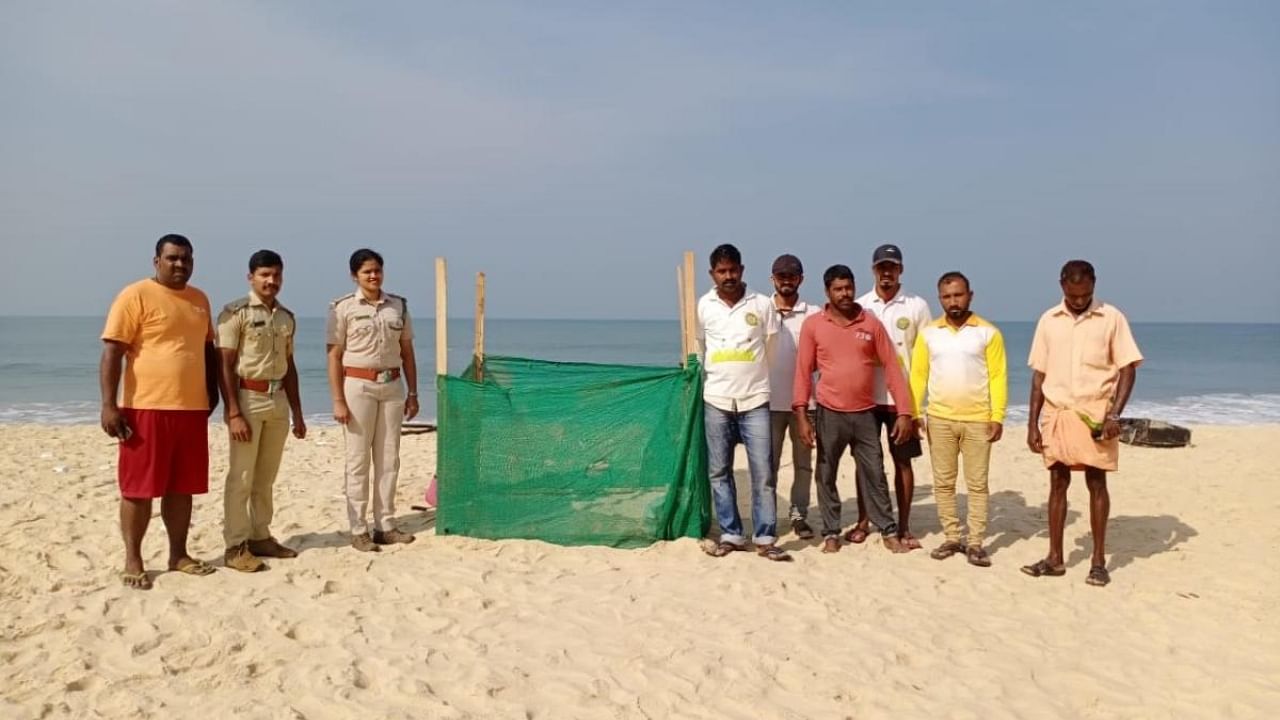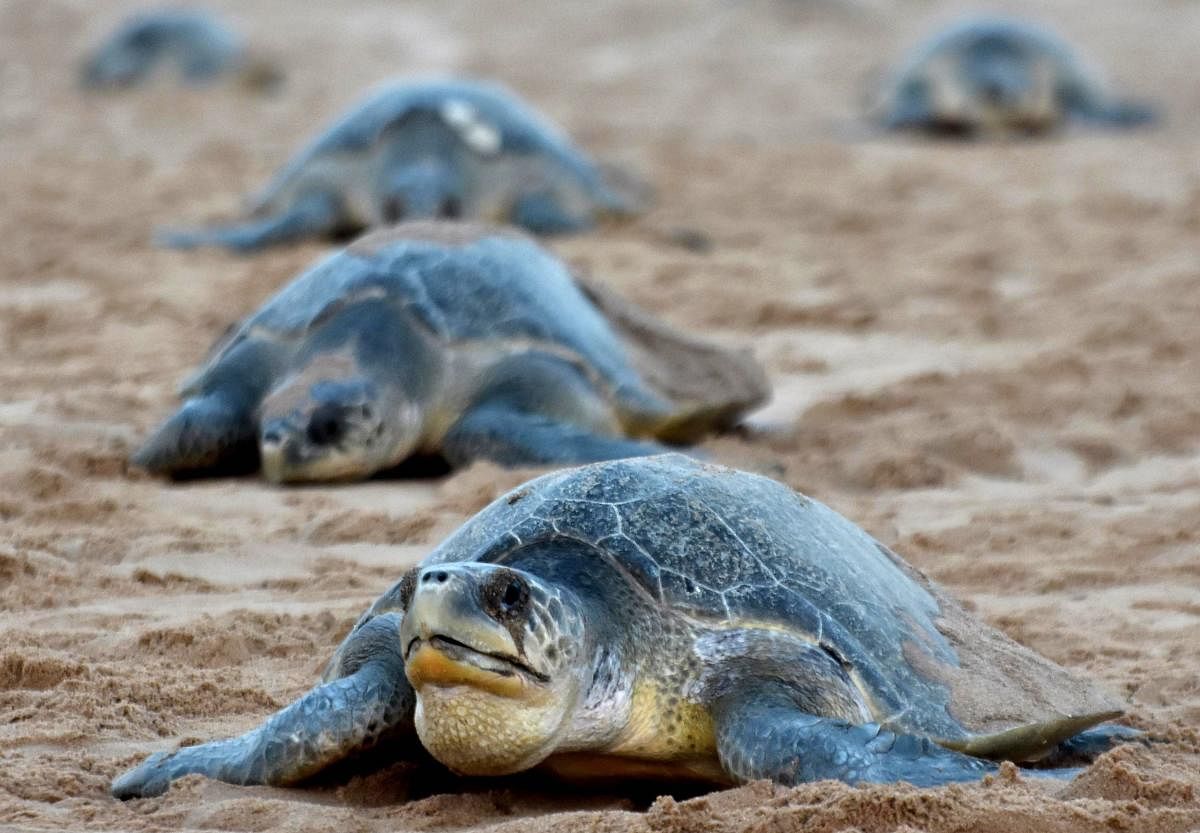

Octogenarian fisherman Babu Mogaveera, in Kodi Bengre of Udupi district, is an expert in locating nest sites of Olive Ridley sea turtles. A decade ago, this skill helped him source eggs for food. Not anymore. Now, he uses his skill to protect this vulnerable species. The Forest Department, in turn, compensates him for his time and effort.
Karnataka’s coasts are witness to a unique collaborative, incentive-based conservation model, which has resulted in the return of Olive Ridley turtles to their breeding grounds after a five-year hiatus.
The upward trend was clear this year when over 500 Olive Ridley hatchlings from 13 hatcheries or nesting sites joined the Arabian Sea at Kodi beach in Kundapur taluk, an important turtle nesting site in the state. Last year, more than 300 baby turtles safely joined the sea here.
In the last two years, the forest department, in collaboration with volunteers, local community and NGOs, has ensured safe nesting sites for Olive Ridley turtles in Kundapur and other nesting sites along the state’s coast.
While some still prefer to eat the eggs, those who report the eggs like Babu, are given Rs 500 for every nesting site he finds. The conservation is based on word-of-mouth, depends on a few posters that highlight the illegality of consuming the eggs and is part of a changing tide in the attitude of locals towards the turtles.
Pregnant Olive Ridley turtles come to the beach in search of nesting sites, says Prabhakar Kulal, former Kundapur range forest officer. He says that one sea turtle can lay 100-120 eggs at a time. The eggs incubate for roughly 47 to 52 days on warm sand. The survival rate is one to two per 1,000 hatchlings.
What makes their journey easier is a clean beach. In the past, experts postulated that sea turtles stopped coming to these coasts because of their poor state.
Due to the efforts of Clean Kundapur project members, around 10-11 nesting sites have been identified in Kodi in just two years. “It is a collective effort,” Ashish Reddy, deputy conservator of forest, Kundapur wildlife division, told DH.
“Now more people are aware of the significance of these marine creatures, I am proud to be part of this conservation effort which is reaching more families,” says Babu Mogaveera.
The nesting sites can be identified from January through April.
A structure shield eggs from humans and other predators. For 47 days, the eggs are monitored constantly and every stage is recorded.
The eggs take four hours to hatch fully. Only 70 to 80 eggs out of 100-120 hatch. In some hatcheries it is even less. The newborn turtles make their way to the ocean by following the downward slope of the beach and the reflections of the moon and stars.
Hatching and migrating to the sea at the same time help them get away from predators. Other unhatched eggs are protected till 60 days until the department members make a final decision.
As the temperature rises, eggs that come in contact with water do not hatch.
Kundapur MLA Haladi Srinivasa Shetty called it a novel cause, adding that the amphibians should be protected because their numbers are dwindling.
The fact that the department has involved local communities has contributed to its success. “The programme is encouraging, and it makes me happy that the district is helping save species that are always under the threat,” deputy commissioner Kurma Rao said.
A similar model of local fishers and the forest department protecting the nests can be seen in Karwar, while the local fishing community in Kasarkod Tonka in Honnavar have taken upon themselves to protect the nests of this schedule 1 species.